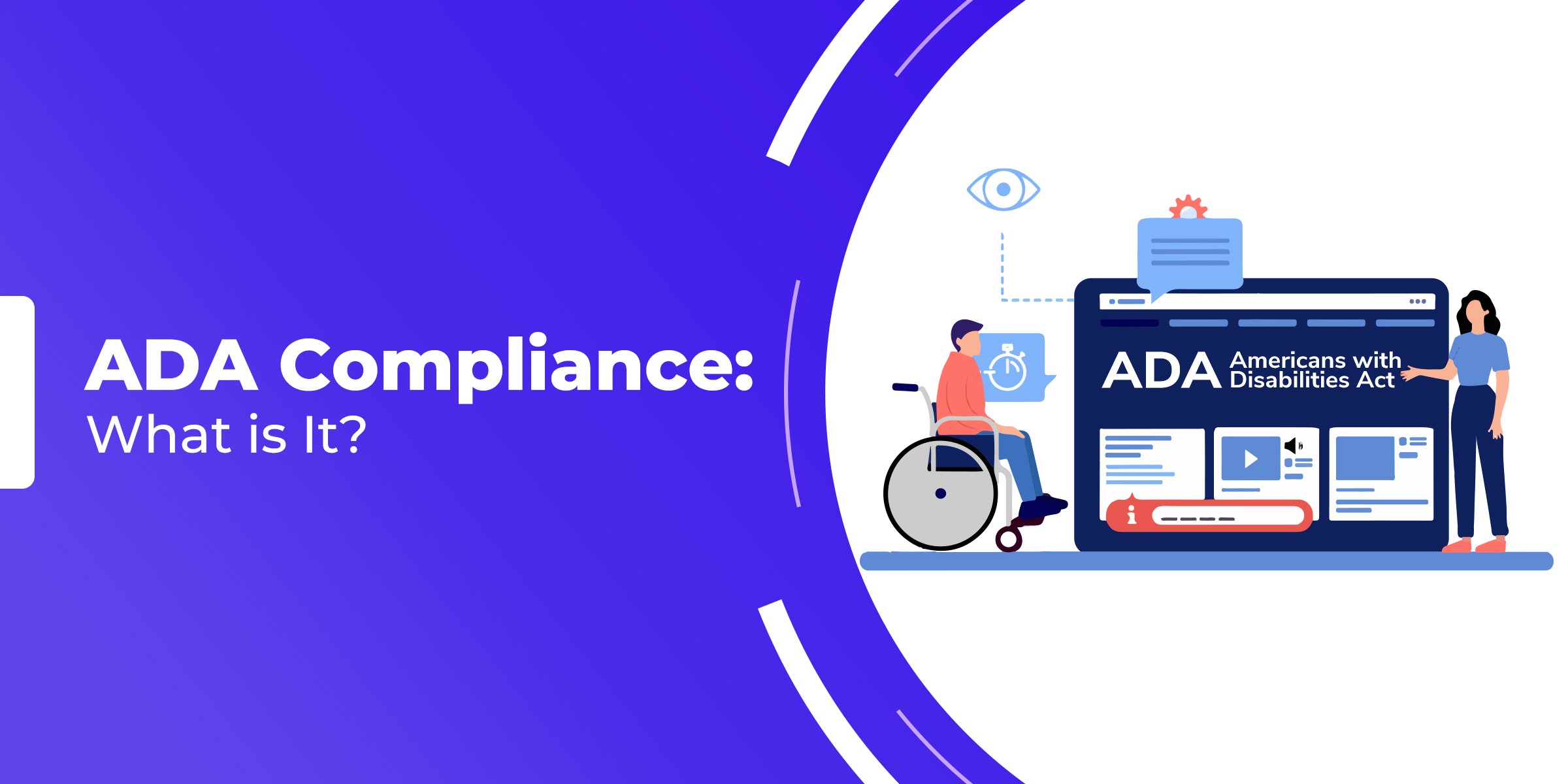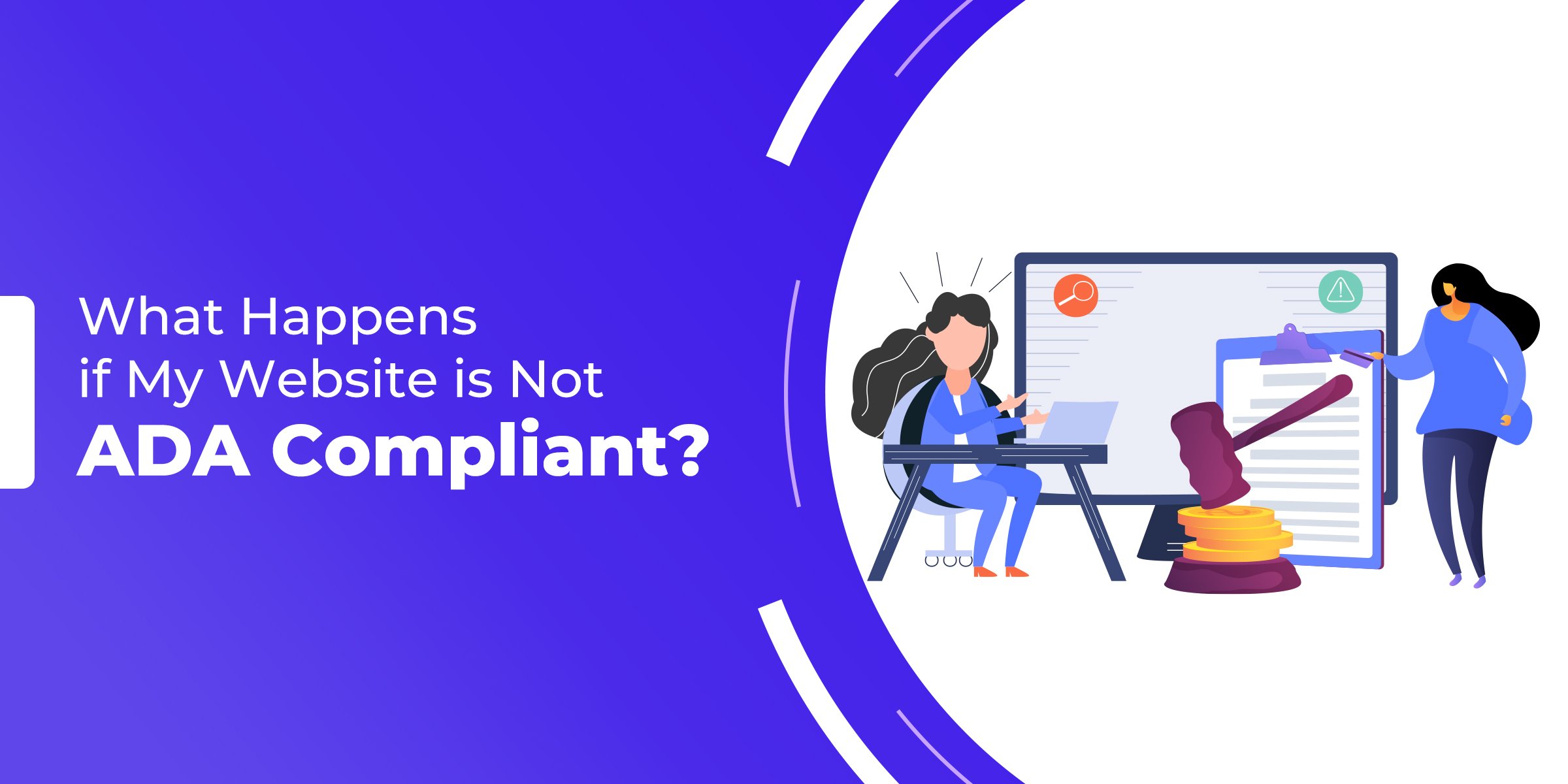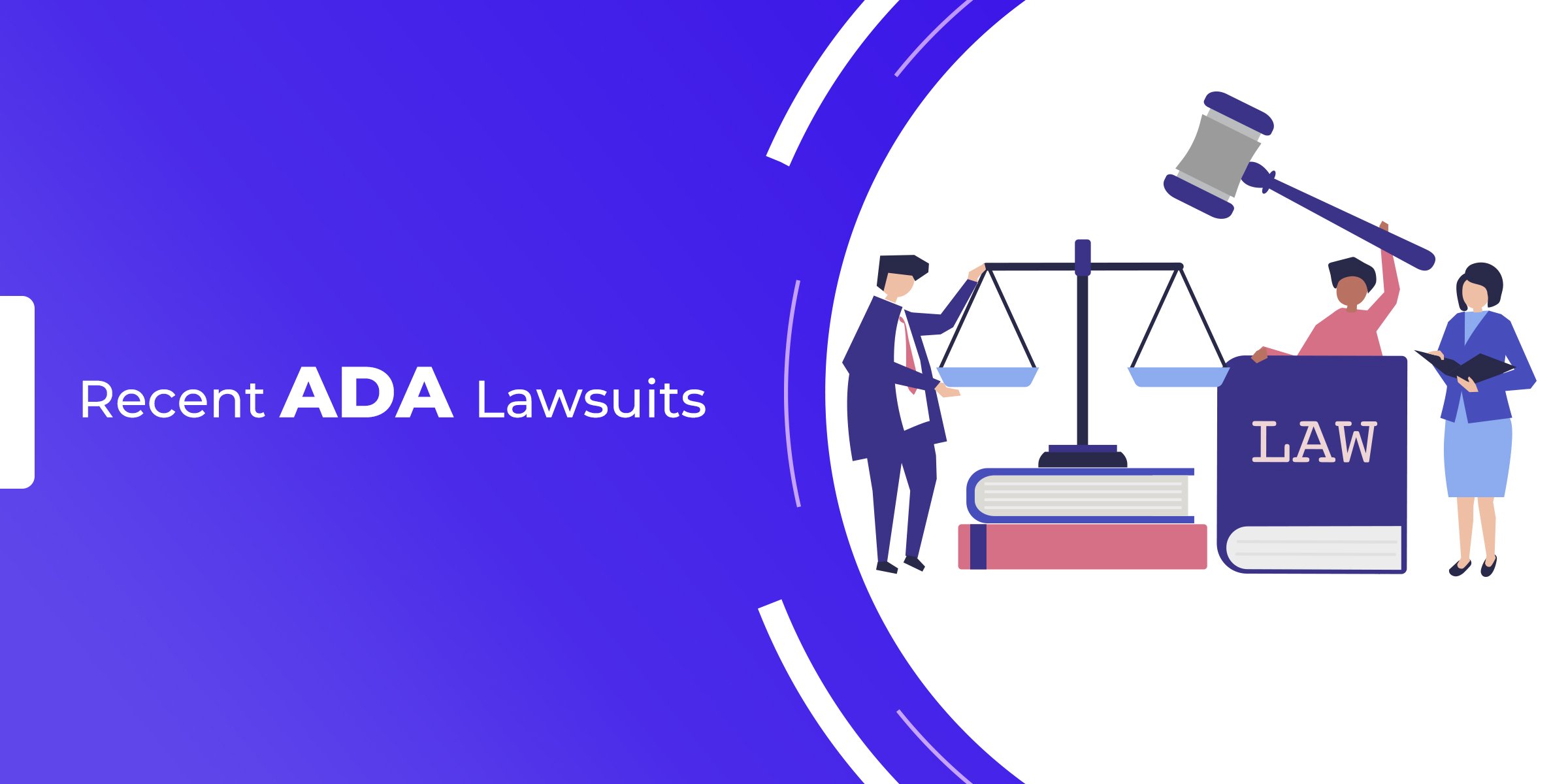Earlier this year, Domino's Pizza violated the Americans with Disabilities Act (ADA). The fast-food chain failed to provide an accessible website and were sued by a blind person. The specific violation was that it was not possible to use a screen reader to place an order on the website – meaning a blind individual could not order pizza through Domino's using their computer.
Our Top Recommendation for ADA Compliance
- Make your website ADA compliant in minutes
- Stay protected with real-time accessibility monitoring
- Save thousands of dollars in development
Domino's was ordered to pay $4,000 to the plaintiff, plus cover all legal fees incurred by the plaintiff during the case – likely to be a considerable sum given the litigation began 5 years before the decision. This case shows the risk that non-compliant company websites run if they provide a service to customers like food delivery.
So, can you be sued if your website is not ADA compliant? The answer is yes.
In this guide we'll explain what ADA compliance is and how to ensure your business is ADA-compliant to avoid potentially damaging lawsuits and settlements and make sure that everyone can use your site.
We offer this website completely free to our visitors. To help pay the bills, we’ll often (but not always) set up affiliate relationships with the top providers after selecting our favorites. However, we do our best not to let this impact our choices. There are plenty of high-paying companies we’ve turned down because we didn’t like their product.
An added benefit of our relationships is that we always try to negotiate exclusive discounts for our visitors.
ADA Compliance: What is It?


ADA compliance refers to the Americans with Disabilities Act (ADA) Standards for Accessible Design. The US Justice Department released the Act in 2010 to ensure that business websites were built in a way that makes them usable and accessible by anyone, including disabled users.
Is ADA Compliance Mandatory for Websites?


ADA compliance is not mandatory for all websites. Whether your organization needs to be ADA compliant depends on whether it meets any of the following criteria:
- A business that provides a service for the benefit of the public
- A state or local government agency
- A company with at least 15 employees
If your website does not meet any of these requirements, it doesn't have to be ADA compliant by law. However, it's still important to be aware of ADA standards and try to incorporate them into the design of your site. After all, you never know if your business might grow to more than 15 employees, and if so, it's important you have the compliance procedures in place to support that growth. Plus, there's a lot of gray area around providing a service for the benefit of the public.
ADA sets out some good standards on how to build a website in a way that's navigable to disabled users – so compliance with the standards ensures your customers with disabilities aren't missing out.
What Do I Need to Do to Make My Website ADA Compliant?


The primary basis on which ADA compliance is determined is according to the following four principles:
- Easy to Understand Content. All the content on the site must be formatted so that it is easy to understand. All the text, images and functions on the site must not confuse people or overcomplicate the site.
- User-Friendly Design. The way in which users can navigate the site should be straightforward and as simple as possible. Tools like calculators and online forms should be easy to use, regardless of disability.
- Equal Experiences. The website must be designed such that all users have the same experience, regardless of any disability. This means for example that the functionality should be available for someone with poor eyesight to have larger font options available, or someone who is blind to have text-to-speech available to them.
- Versatility. You should have alternative ways of presenting all aspects of your site – including text, images, videos and tools – so that users with disabilities can use the site when they have a preferred way of interpreting the content.
Practical Steps towards Compliance
You might be wondering how these principals apply to your site in practice. So, here are some concrete examples of steps you can take to improve accessibility to people with disabilities:
- Images with Text. Avoid using images that feature text, as these won't be picked up by text-to-speech functionality that some people use. Make sure all text is formatted as text on the site.
- Text Resizing Options. Make it easy for people with poor eyesight to adjust the font size of content on your site without altering the layout.
- Language. If possible, have options to present parts of your site in different languages so that people unfamiliar with English have alternate ways to understand things.
- Good Contrast Ratio. Make sure you set an appropriate contrast ratio for the site so that people with color blindness can navigate the site.
- Error Alerts. Set error alerts for online forms that have not been filled in correctly so that everyone is aware of what they need to do.
- Navigational Choice. Make sure that users have multiple different ways of navigating the site and getting to specific pages, for example by providing access to an HTML sitemap.
This list isn't exhaustive, and you may want to seek external advice if you want specific guidance on how your site can be improved.
Read our detailed guide on How to Make Your Website ADA Compliant
What Happens if My Website is Not ADA Compliant?


If your website fails to meet ADA standards, you run the risk of being sued. Historically, it was fairly uncommon to be subject to an ADA-related lawsuit. In recent years, however, the number of lawsuits has grown considerably (15% increase). In fact, for example, in Northern California over 1,400 ADA lawsuits have been filed in 2021 alone.
Many of these lawsuits have been filed by lone individuals, who have cottoned on to the potential compensation they might be entitled to following a successful lawsuit. More than a quarter of the lawsuits in Northern California have been filed by the same quadriplegic individual.
In this context, it's quite possible that your website could be targeted as part of a spate of lawsuits aimed at attracting compensation from non-ADA compliant businesses. The consequence of an ADA lawsuit varies depending on the severity of the breach. ADA lawsuits have been known to attract compensation as high as $26,000 in more extreme cases.
In suits involving the compliance of websites with ADA, the penalties involved are usually smaller. The most common penalty at the federal level is a demand that the website be updated swiftly to better cater to people with disabilities. However, don't forget to factor in the cost of an attorney to defend you in court – which could cost upwards of $1,000/hour.
In some states like California, the penalties can be higher. The minimum statutory penalty for an ADA violation in California is $4,000. Your website could end up with penalties higher than this if there are multiple violations on the same website.
Recent ADA Lawsuits


We've outlined the lawsuit Domino's Pizza faced. They paid the plaintiff $4,000 and had to cover all legal fees. However, there are cases where lawsuits are dismissed.
Let's take a look at a case that happened in July 2021. A newspaper publisher was being sued by a deaf individual that claimed the companies website violated the ADA. How? Well, the website did not have closed captioning in its videos. This case was dismissed by Judge Brian Cogan. The decision was made on the basis that the newspaper website was not considered a “place of public accommodation” and as such it did not have an obligation to comply with this aspect of ADA.
This decision shows that not all businesses' websites are liable for ADA-litigation – the decision depends on whether the websites are considered to provide a place of public accommodation.
Final Thoughts
ADA compliance is important to ensure that your organization meets all of its legal obligations. When you're designing your site, make sure you're not just thinking about the rules but put yourself in the shoes of someone with a disability and think about areas of your site they might find challenging.
If you can design your site in an empathetic way that reflects the needs of all users, you've built a product that is valuable to everyone.
Our Top Recommendation for ADA Compliance
- Make your website ADA compliant in minutes
- Stay protected with real-time accessibility monitoring
- Save thousands of dollars in development






















